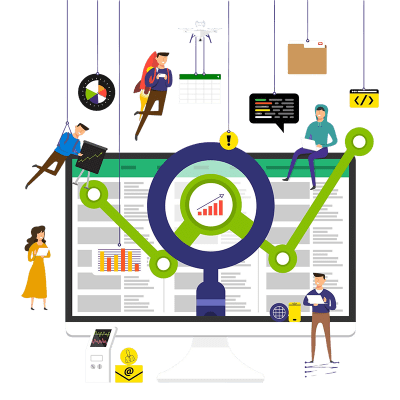Customer experience (CX) is no longer optional—it’s a key driver of business success. Today’s customers expect consistent, personalized, and seamless interactions across every channel. To meet these expectations, organizations must first understand the experiences they’re delivering—and that starts with measurement.
You can’t improve what you don’t measure. The ability to track, analyze, and act on the right customer experience KPIs is essential. It’s what separates reactive businesses from those that are truly customer-centric.
This blog explores the KPIs that matter most in CX, how to use them effectively, and how businesses can optimize the entire customer journey with data-driven insights.
You can’t improve what you don’t measure. The ability to track, analyze, and act on the right customer experience KPIs is essential. It’s what separates reactive businesses from those that are truly customer-centric.
This blog explores the KPIs that matter most in CX, how to use them effectively, and how businesses can optimize the entire customer journey with data-driven insights.
Why is Measuring Customer Experience Critical?
Customer experience encompasses every interaction—whether it’s browsing a website, opening a marketing email, talking to support, or using a product. When these moments align well, the result is loyalty, advocacy, and revenue. When they fall short, the impact can be immediate and lasting.
Yet many companies still struggle to answer:
Measurement is the foundation that turns those questions into opportunities.
Yet many companies still struggle to answer:
- Are our customers truly satisfied?
- Where do they drop off in the journey?
- Which touchpoints are driving conversions?
- What’s the impact of our CX initiatives?
Measurement is the foundation that turns those questions into opportunities.
The KPI Framework: What to Track and Why
Rather than track everything, businesses should focus on a balanced set of KPIs across these five dimensions:
Why it matters: These are direct signals from your customers. They offer fast feedback and are ideal for benchmarking progress over time.
Understanding how users interact with your digital experiences helps you identify friction points and areas for improvement.
Why it matters: Customers today value speed and empathy. Proper support directly contributes to better overall experience and reduced churn.
Why it matters: These KPIs link experience to business outcomes. Loyal customers are not only more profitable—they’re your strongest brand advocates.
- Customer Satisfaction and Loyalty
- Net Promoter Score (NPS)
- Customer Satisfaction Score (CSAT)
- Customer Effort Score (CES)
Why it matters: These are direct signals from your customers. They offer fast feedback and are ideal for benchmarking progress over time.
- Engagement and Behavior Metrics
Understanding how users interact with your digital experiences helps you identify friction points and areas for improvement.
- Session Duration / Time on Page
- Bounce Rate
- Click-Through Rate (CTR)
- Conversion Rate
- Operational and Support KPIs
- First Response Time
- Resolution Time
- Ticket Volume
Why it matters: Customers today value speed and empathy. Proper support directly contributes to better overall experience and reduced churn.
- Customer Retention and Lifetime Value
- Customer Retention Rate
- Churn Rate
- Customer Lifetime Value (CLTV)
Why it matters: These KPIs link experience to business outcomes. Loyal customers are not only more profitable—they’re your strongest brand advocates.
- Voice of the Customer (VoC) Insights
- Feedback Forms and Surveys
- Online Reviews and Social Listening
- User Interviews or Focus Groups
Optimization: From Insight to Action
Once you’re tracking the right KPIs, the next step is optimization. This is where data turns into impact.
- Establish a CX Baseline
- Identify Bottlenecks and Drop-offs
- Test and Experiment
- Automate Where Possible
- Trigger campaigns based on customer behavior
- Surface high-priority support issues
- Personalize content dynamically
- Close the Feedback Loop

Common Mistakes to Avoid
- Tracking too many metrics: Focus on a few KPIs that align with your goals.
- Measuring only at the end of the journey: Analyze each step to spot early warning signs.
- Lack of cross-functional alignment: CX is not just a marketing or support issue—it’s a company-wide commitment.
- Ignoring qualitative data: Not all insights live in spreadsheets. Listen actively to what customers are saying.
Tools and Technologies That Help
Several tools can support CX measurement and optimization, such as:
Many companies also leverage AI-driven insights and low-code platforms to build flexible CX dashboards and automation layers.
- Analytics platforms (e.g., Google Analytics, Adobe Analytics)
- Survey tools (e.g., Typeform, Qualtrics, SurveyMonkey)
- Customer Journey Mapping tools (e.g., UXPressia, Smaply)
- CRM and Marketing platforms (e.g., Salesforce, HubSpot, Dynamics 365)
- Heatmaps and session recording (e.g., Hotjar, FullStory)
Many companies also leverage AI-driven insights and low-code platforms to build flexible CX dashboards and automation layers.
Final Thoughts
Measuring customer experience isn’t about tracking surface-level metrics. It’s about gaining meaningful insights into customer needs and understanding what truly drives their satisfaction. With that clarity, organizations can focus on continuous improvement—guided by purpose and strategy.
In a world where products can be copied, experience becomes your brand. By focusing on the right KPIs and acting on them, you create a feedback-driven culture that fuels innovation, loyalty, and sustainable growth.
In a world where products can be copied, experience becomes your brand. By focusing on the right KPIs and acting on them, you create a feedback-driven culture that fuels innovation, loyalty, and sustainable growth.




